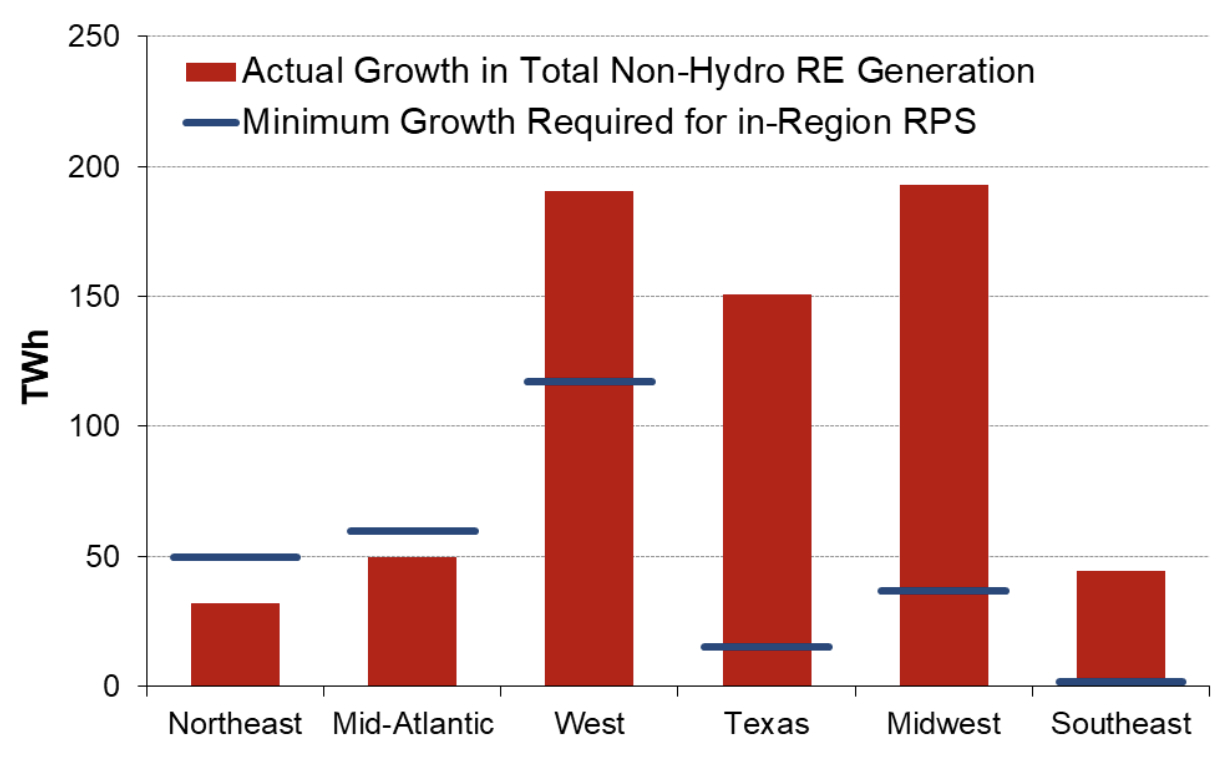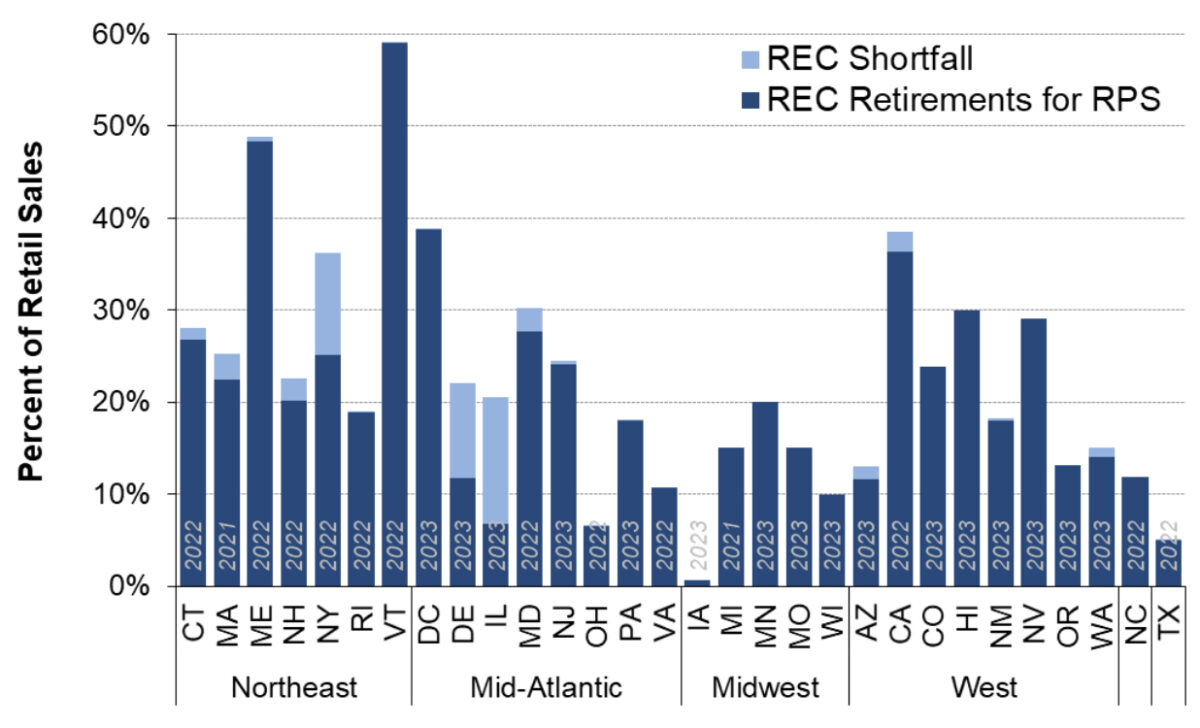All but three of the 29 states plus DC that have a renewable portfolio standard (RPS) are meeting their current targets, according to an analysis by Lawrence Berkeley National Laboratory.
Vermont’s current RPS target of nearly 60% is the highest of any state, as shown in the featured image above, provided in the analysis. Every bar in the image without a light blue segment at the top means that state has met its current RPS.
The study says that “large shortfalls” in New York and Illinois are “expected to close” as contracted projects come online.
The study counts a state as meeting its RPS if the state’s utilities have retired renewable energy credits (RECs) equal to the amount of the RPS requirement. States award RECs for renewable power generation.
A state may also permit utilities to comply with its RPS by submitting “alternative compliance payments.”
Delaware’s “large shortfall,” the study says, is due to its low cost for alternative compliance payments compared to other states in the region.
Puerto Rico is not included in the analysis but also has a large shortfall in meeting its renewables target. The territory stands at 12% renewables, compared to its current target of 20% by 2022.
Solar carve-outs
Of the 15 states plus DC that have RPS carve-outs that require a certain amount of solar and/or distributed generation, all but four have met or nearly met the goals, as shown in the nearby image.

Drivers
While the study says that “parsing out the incremental impact of individual drivers” for the growth in renewables generation is “challenging,” it observes that RPS policies have been a “larger driver” of renewables deployment in three regions:
- The Northeast, where almost all renewable capacity additions—mostly onsite and community solar in recent years—are serving RPS demand
- The Mid-Atlantic, thanks to solar carve-out capacity and RPS-certified projects with corporate power purchase agreements, which “potentially sell RECs into compliance markets”
- The West, where added renewables are driven by “aggressive” long-term RPS and clean energy standard (CES) targets throughout the region, and where non-RPS additions are mostly onsite solar.
Regions where RPS standards have been a “smaller driver” are:
- Texas, which achieved its final RPS target in 2008, so that all renewables growth since then is not influenced by the RPS
- The Midwest, where there is “lots of wind development,” some of which is contracted to utilities with RPS needs
- The Southeast, where renewables growth is primarily driven by utility procurement and qualifying facilities under the Public Utility Regulatory Policy Act (PURPA).
In all but two regions, renewable generation well exceeds the combined RPS targets for the states in the region, as shown in this graph from the study:

Ultimate targets
Across the 29 states plus DC with an RPS, 16 have ultimate RPS targets of at least 50% of retail electricity sales, and 4 have a 100% RPS. Sixteen states have adopted a 100% clean energy standard, which can be met by renewables and typically also nuclear and hydroelectric generation as well.
RPS and CES policies will require 900 TWh of new clean electricity by 2050, the study says, “equivalent to roughly 3x the historical rate of RPS buildout.”
Berkeley Lab is hosting a webinar on August 28 to present the study’s complete findings. The study is titled “U.S. State Renewables Portfolio & Clean Electricity Standards: 2024 Status Update.”
This content is protected by copyright and may not be reused. If you want to cooperate with us and would like to reuse some of our content, please contact: editors@pv-magazine.com.








Michigan, MPSC is not allowing net metering. A MPSC regulation only allows a single meter to register solar panel generation. This makes the investment in solar totally useless for Michigan residents using any other form of self produced energy savings non-beneficial!
I have had Geo-Thermal heating and cooling sense I had my current home built 31 years ago. DTE my for profit utility required a separate meter. My electric bill went down by 65%. For all other DTE customers installing Geo-thermal heating and cooling the results were very similar (45 to 65 percent reduction in electric bill.
Now I installed a 27 panel solar roof mounted system and DTE is refusing to allow my generation of electricity to be used on both meters. Current Geo-thermal cost month of August $ 62.10 Meter for rest of home that DTE refuses to install a meter that allows my Solar panels to supply is $206.30 This has gone on for 4 months for which I have Zero reduction in my electric bill for a inspected and passed solar panel system. Any help in rendering this mess would be greatly appreciated.
net metering not allowed in Michigan by MPSC regulation